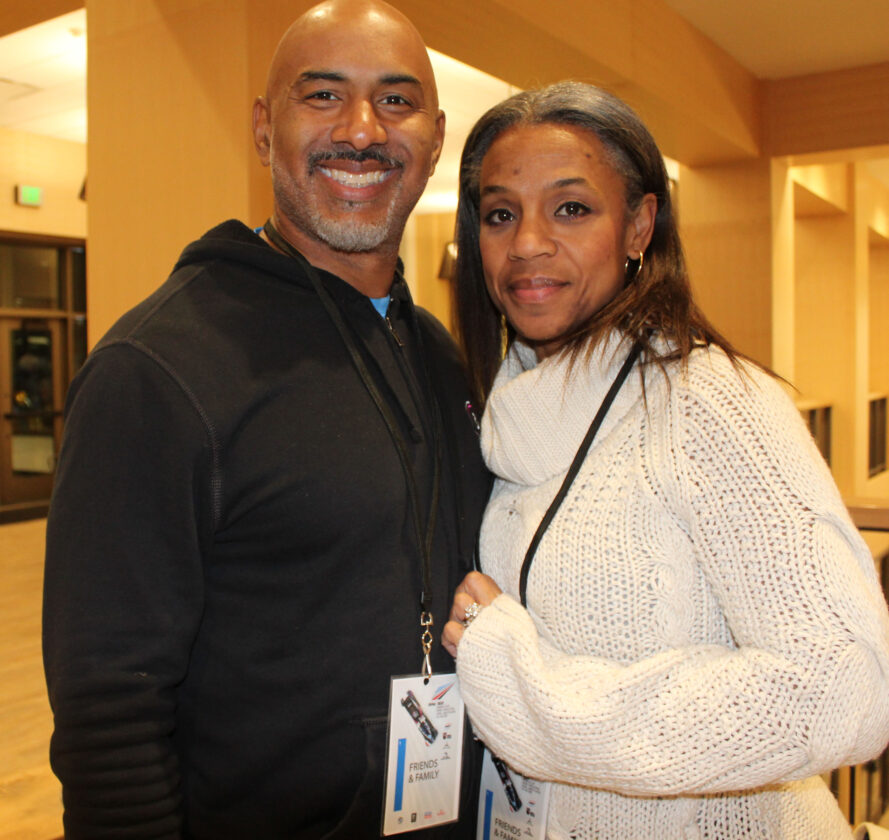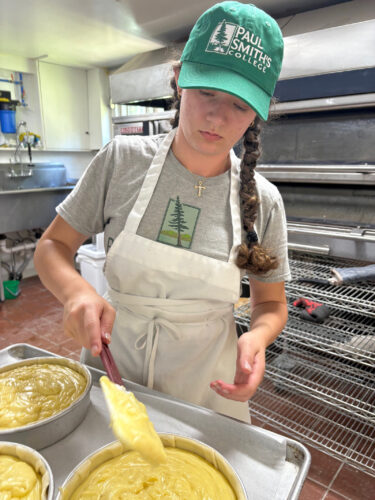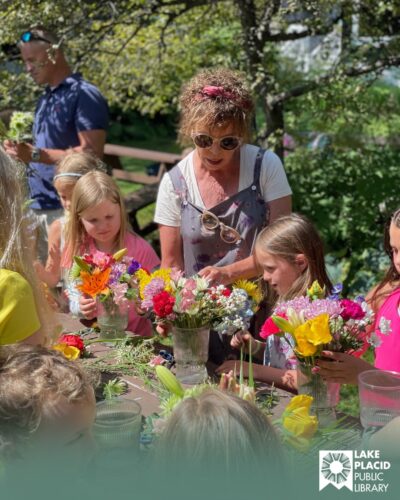ON THE SCENE: U.S. bobsledders inducted into Hall of Fame

Members of the Morgan family pose Saturday, Dec. 17 during the USA Bobsled & Skeleton Hall of Fame induction ceremony at Mount Van Hoevenberg. Included here are Terrence Morgan, John F. Morgan, Kelly Morgan, Bryan Morgan, Dermott Morgan and Sean Morgan. James “Nitro” Morgan, who died in a bobsled accident in 1981, was inducted into the Hall of Fame this year. (Provided photo — Naj Wikoff)
On Saturday evening, Dec. 17, following the women’s monobob and two-man bobsled IBSF World Cup award ceremony, the state Olympic Regional Development Authority’s Mountain Pass Lodge at Mount Van Hoevenberg hosted the USA Bobsled & Skeleton Hall of Fame induction ceremony.
Without question, all inductees were worthy of Hall of Fame recognition, yet two stood out for having taken the sport to another level. One is Geoff Bodine, producer of the Bo-Dyn Bobsleds that broke a 60-year drought in U.S. bobsledders winning an Olympic gold medal. The other was Vonetta Flowers, the first Black athlete in any sport from any country to win a gold medal in a Winter Olympics, opening the doors to a diversity of athletes now competing and winning, representing for not just the United States.
Others inducted were Tristan Gale Geissler, Randy Jones, Steve Mesler and James “Nitro” Morgan. All six met the criteria for selection as individuals who contributed significantly to the sports of bobsled and skeleton through their dedication and commitment as athletes and supporters. Two were unable to attend in person: Flowers and Geisler.
At the 2002 Olympic Winter Games in Salt Lake City, Utah, Geisler won the first gold medal awarded to a woman skeleton athlete in a Winter Olympics.
“Skeleton was a huge part of my adult early life,” said Geisler in a prerecorded statement. “Some of my closest friends and biggest challenges have come from skeleton, all of which have made me a better human being. Skeleton, in my opinion, is the most fun you can have on ice. That fun initially brings you to the sport, but you end up staying because of the friendships, the competition, the personal growth, and if you are lucky, some nice hardware at the end of it.”

Jasmine Jones, Nicole Vogt and Riley Compton (Provided photo — Naj Wikoff)
Jones, a four-time Olympian, won silver in the four-man bobsled driven by Todd Hays at the 2002 Winter Olympics, becoming the first American team since 1956 to win an Olympic medal.
“The thrill, the unknown, and not wanting to get a real job attracted me to bobsledding,” said Jones. “I knew what it was because of Herschel Walker, Willie Gault, and all those guys back in ’92, but I had no idea of what was involved in being good, being great, and winning an Olympic medal.”
Participating in a push championship in Lake Placid sparked an interest in bobsledding for Jones, as did attending an international push championship in Monte Carlo. Still, his first ride down the bobsled run in Calgary introduced him to the thrill. That, and winning a World Cup in his first year, set the hook. Jones demonstrated determination as it took him another 11 years to get a silver medal at the 2002 Olympics with Brian Shimer. He also won three other World Cups and three World Championship medals giving great credit to his wife Cheri for her support and for keeping him focused.
“Knowing I have my family’s support means a lot and has meant a lot over the years,” said Jones.
Inductee James Morgan, the top U.S. driver from the mid-1970s until 1981, died during the World Championships held in Cortina, Italy. Several of his family members accepted his plaque on Dec. 17, including Bryan, Dermott, John, Kelly, Sean and Terrance.

Geoff Bodine (Provided photo — Naj Wikoff)
“I think it’s great that Nitro Morgan was inducted into the Hall of Fame,” said former bobsled athlete and coach Mike Hollrock. “We competed against each other for several years. I’m the one who took him on his ride here that enabled him to get his license. I was coaching the team when he got killed. That was a terrible day. Unbelievable. I was right there and saw that he had had a bad cut. They took him to the hospital, and I knew he was gone when I saw the priest come in.”
Adding anguish to agony, Nitro’s brother John was the television commentator covering the event when his brother crashed. “He was born to be a driver,” said John. “He was fearless, dying, doing what he wanted to do in life.”
“Vonetta Flowers paved the way for us,” said U.S. bobsledder Kaysha Love, who won gold with pilot Kaillie Humphries in the IBSF World Cup two-women race on Sunday, Dec. 18. “She allowed me to realize that it’s possible. Sometimes it takes a person like Vonetta to step forward to let it be known that a person of color can achieve success. She’s one of my heroes. Seeing her inducted into the Hall of Fame is a huge stepping stone. I am incredibly grateful to be part of a program that she paved the way for all of us, men and women; girl power.”
Teammate Jasmine Jones, who competed with pilot Nicole Vogt during the two-woman bobsled World Cup race on Sunday, agreed, saying seeing a Black women win will inspire more athletes of color to compete, and doing so, increases potential success.
“The fact Vonetta was able to race and get gold, overcoming certain adversities that come with that achievement, creates so much motivation. If she can do it, I, as a Black woman, can do it too,” said Jones. “It’s amazing to see that possibility.”

Randy and Cheri Jones (Provided photo — Naj Wikoff)
NASCAR great Geoff Bodine credits John Morgan for inspiring him to take on designing an American-made bobsled. His sleds enabled drivers like Shimer to win an Olympic medal, Flowers and driver Jill Bakken to win gold in 2002, and, in 2010, Steve Holcomb to win gold in the four-man race after a 62-year drought. Bodine enjoyed watching bobsledding, but it was taking a turn at driving one following the 1992 Olympics, wherein he crashed so severely that he bent the frame, causing him to realize, in his words, our sleds were “junk.” Bodine then promised to design and build a better replacement sled.
Bodine thought it might cost $25,000 to build a better sled. Ultimately, it required developing a partnership with race car designer Bob Cuneo, Chassis Dynamics, and Whelen Engineering and spending over $500,000 to build their first sled. Ten years after he started, three Bo-Dyn sleds took medals at the 2002 Winter Olympics.
“I believe that when something comes out of your mouth, you’ve got to do it,” said Bodine. “We didn’t copy any other country’s sleds. We looked at them, but we didn’t copy them. It just took a lot of people and a lot of hard work, but that’s what you do in NASCAR racing. You work and think about it 24-seven, and that’s what we did, ending up with the fastest sled in the world.”
Bodine said he appreciates the award, but in his mind, it belongs to all the people who have worked developing the Bo-Dyn sleds over the years. He said it hurt when BMW came in with their money and took over designing the sled, which he notes hasn’t done as well as the Bo-Dyn. He is optimistic that the current designer, who has a race car background, will bring the sleds back to winning form.
Steve Mesler was a member of Steve Holcomb’s drought-breaking four-man team that took gold for the U.S. at the 2010 Vancouver Winter Olympics in the Bo-Dyn “Night Train” sled. Further, Mesler placed third or better in 39 World Cup bobsled races, the most of any U.S. push athlete.

Steve Mesler (Provided photo — Naj Wikoff)
“After four years of competing as a track athlete, I thought my sports career was over. Almost every bobsled and skeleton athlete in this room went through the experience of, ‘Is my sports career done, or do I want to find something else to do?’ I had a coach, former Olympic slider Rob Olsen, so I sent a lifeline out. I was a scared 22-year-old kid who thought his sports career was done and got an email back saying sure, you can do this; you need to gain some weight and get started. My parents are here, my wife … thank you guys (said, sweeping his arm to include everyone in the room). I get it now. I get what it means. I get what it takes to make this happen.”
A very emotional, joyful, honest and uplifting celebration ended with a heartfelt closing by USA Bobsled & Skeleton CEO Aron McGuire, who concluded with, “I’d like to recognize the paths taken by tonight’s Hall of Fame class. Each of these individuals exemplifies an impactful legacy. They’ve broken down barriers in winter sports, led their teammates to amazing success on the track, and supported them off the track. They believed in themselves and those around them.”
(Naj Wikoff lives in Keene Valley. He has been covering events for the News for more than 15 years.)




